Welcome to #IndustryMade!
If you're going to read any of our blogs, consider this one the holy grail that you shouldn't ignore. Whether you're an established apparel brand or an apparel brand to-be, this blog will be mighty useful. You still might ignore it, but then that's on you, and this is a buttload of free information you're sorely going to miss out on.
Without further adeiu, let's get to the good stuff. 😈
Picking a t-shirt 👕 can get a little more challenging than you initially would think when trying to create your new brand collection - they're all kind of the same yet completely different from one another and it can get easily overwhelming, so ...where to begin? 🧐
For one, there's different colors, but you already knew that. 😎 Did you know there's also different fabrications, hemlines, cuts, neck tags, sewing/stitching, threads, sleeve cuff styles, torso lengths, dyes, cutting techniques, features like sweat-wicking and UPF ratings, flame retardant fabrics, levels of stretchiness, countries of origin, and what the heck does 'Union Made' even mean and WHY is it so expensive?! 💀
Take a breather. This blog is long, but should serve as your bible to refer back to if you find yourself in a pickle with garment/blank selection for FABRICS.
 FABRICS
FABRICS
This should be your Numero Uno factor to pay attention to when selecting a garment (apart from price) - yes, even over color. And here's why 🤓:
👉🏻 Your brand depends more on garment quality than garment color. Period. 👈🏻
Let's say your brand colors are a Golden Yellow, Pale Yellow and Turquoise and you have your specific Pantone Colors called out to solidify your brand identity. Good!

Now, those colors are nothing if you're incorporating them onto a low quality product people don't even want to wear. Your brand identity will sit in your customers' closet/dresser never seeing the light of day because you chose to prioritize your brand colors over the garment itself... Big no no. 🫢
That will never be the issue the other way around.
💡 Prioritize the garment over the color, and instead, incorporate your colors into the designs on the garments themselves. That's what we like to call a Win-Win. 👌🏼
Now you not only opened yourself up to literally thousands of more options in the apparel space for garment selection as a whole, but probably also are realizing there's a lot of creative approaches to problems you'll face as you grow your brand than you initially thought, this being a small one.
Keep on this bandwagon, it'll pay off as you grow. 📈
-
So - FABRICS. Let's approach our first fabrication in a DO versus DON'T format.
100% COTTON
DO pick a shirt that's higher than 30 singles (40 is better) - you don't need to Google it (but you can if you want to)), just make sure the shirt you pick meets *at least* 30 singles.
DO get combed AND ring spun cotton in whatever garment you choose. Combed means literally combing each fiber to create a more uniform and streamlined material. This will tighten up stray strands and remove impurities from the overall fiber, so the final product will be noticeably smoother to the touch."Open-end” cotton that doesn't undergo this process is perfectly usable, but is coarser—look at it under a microscope (see image below), and it will appear frayed and jagged. Ring-spun cotton, on the other hand, has all of its fibers neatly spun into a smooth twist with a tighter texture. This produces yarns that are finer, smoother, and softer - which creates garments with the same properties.

This image is a perfect example of why CHEAP IS EXPENSIVE.
Invest in what your customers want to invest in - QUALITY.
DO pick Peruvian Cotton if you can afford it (it's a bit pricier, but it's the BEST cotton in the world, I promise you). If you can't afford Peruvian cotton for your brand, don't sweat it - just stick to the countries that host a humid, tropical climate in their agricultural areas; it's what cotton grows best in (think: Peru, Columbia, Honduras, etc.).
DO ensure the shirts you fall in love with are pre-shrunk. Cotton is a natural fiber. It shrinks with heat - Remember Shrinky Dinks? Not so fun with clothing and you will get some unhappy customers in your inbox. Do your research.
DO market the fact that this is a 100% natural fiber garment AND it's sustainable, there's a big cotton movement going on, capitalize on it with your products should you go this route.
DO remember that this shirt is breathable - it's cotton! MARKET IT, TOO.
DO also use these keywords to describe cotton garments to your audience: Absorbent. Breathable. Hypo-allergenic. Non-toxic. Biodegradable. Sustainable. Renewable.
DO expect superior printability. When it comes to screen printing - Cotton truly is King. 👑 (we'll get into inks on our next blog: Inks: A Colorful Palette to Print With.
DON'T think all cotton garments are alike. They're not. Some are as soft as silk and fit great and others as rough as sandpaper and fit like shit.
DON'T assume your audience likes 100% cotton garments, they're not for everyone. Some feel they're not as soft as blended shirts, while others won't wear anything but cotton. It's all about preference of your market, not necessarily YOU.
DON'T expect to fall into a certain 'price range' with 100% cotton garments just because they're not blends - they can be the absolute, most economical choice and also the biggest wallet openers. They have the most variability with price and quality, which is why we spent so much time here on this section.
BLENDS
This is where it gets fun.
We're going to ditch the DO vs. DON'T format for this section as it will go on for days if we do that - We're going to keep this one brief.
You can do a traditional blend, containing only 2 fabrics woven together into a garment like cotton + polyester or polyester + rayon, or a tri-blend, like cotton + polyester + rayon - both are considered 'blends'. There's also blends with more fabrics than 3 total combined materials, but we won't get into that today.
A couple things to note with blended shirts compared to 100% cotton shirts:
1) They tend to be stronger. Think: Durability. Longevity.
2) There's a wider variety of textures
3) They tend to be more wrinkle-resistant
4) They tend to be more expensive (this can vary to cents on the dollar to actual dollars)
5) They're omni-market favorites with customers of all interests
In our opinion, we prefer blended tees - which is STRANGE to say because we, for the most part, screen print - and as we said before with cotton tees being King, why would we say blends are our preference?
Because we ourselves are not a clothing brand confined by a specific market or demographic. We are wholly integrated partners across every imaginable industry - and we see what sells for our clients. Trust us when we say blends will be your go-to when selecting garments for your brand 9.9 times out of 10.
-
Here is a mini-breakdown of other fabrications you may see as you grow your brands:
POLYESTER fibers are incredibly strong, meaning they don't tear, stretch out, or pill easily like cotton and other natural fibers. This strength means polyester clothing can easily handle abrasion from machine-washing and doesn't require special care, part of the attraction to blended garments! Polyester does have a significant stretch to it, even moreso than cotton, but it retains it's shape much better. Environmentally concerned customers tend to frown on polyester - BUT there is an awesome polyester alternative that will make these exact same customers STOKED - read below.
WATER BOTTLES - Yep, you read that right! New technologies emerging in the past decade have now been able to integrate the plastics from water bottles that would traditionally end up in a landfill or our oceans into the clothing we wear. We see on average 4-7 bottles per garment. This process also helps save 50 – 60% of the energy required to make goods out of non-recycled polyester. Another one of those Win-Wins we discussed previously.
RAYON is one of the most versatile fabrics around, yet it remains somewhat of a mystery. That’s partly because of its remarkable ability to shape-shift—not just literally, but also in terms of imitating other fabrics. Rayon has been known to take on the properties of silk, cotton, wool, and others, and can be used in nearly any type of clothing. This can make it challenging to pin down exactly what it is, how to launder it, and what type of weather it’s best suited for. It's typically used in triblend garments as a supplement to the texture and feel of the garment, as opposed to being a garment entirely made of it.
MODAL is a fiber derived from wood pulp, so it is not synthetic. It has some great properties and is typically blended with cotton to create a soft, silky feel. It has some other good properties in that it helps reduce shrinkage and torque. It also has some moisture wicking properties whereby it absorbs wetness and pulls it away from the skin allowing it to dry quickly (so your shirt doesn’t stay wet).
BAMBOO is unique as it's not only biodegradable, sustainable and eco-friendly, but bamboo itself is one of the fastest-growing plants in the world; able to replenish itself after a full harvest in just one year. Incorporating this fabric component into a brand that's focused on the environment would be a solid move. Not to mention the thermo-regulating properties bamboo naturally possesses, which makes it a great choice for activewear or outdoor brands.
-
A couple of final non-fabric-related nuggets when picking a shirt:
- Get a side-seamed shirt, skip the tubular unless it's for a giveaway tee. Tubular is generally lower quality compared to a side-seamed shirt.
- Double check if it's a retail fit - some manufacturers have awkward sizing where a Small fits like a Large and vice versa - Definitely a no-go for a majority of brands.
- Check stock/inventory levels, there's no use falling in love with a garment if the stock is constantly crappy - this is why we love manufacturers like Next Level Apparel, Bella + Canvas, and Independent Trading Co.
& That's a wrap!
We could go on and on (and maybe one day we might with a full in-depth guide!) but we'll cut it to a pause here. There's obviously a lot to research with fabrics and if you ever need a second opinion or a trusted guide to navigate this, ITW is happy to be your partner in all things apparel.





